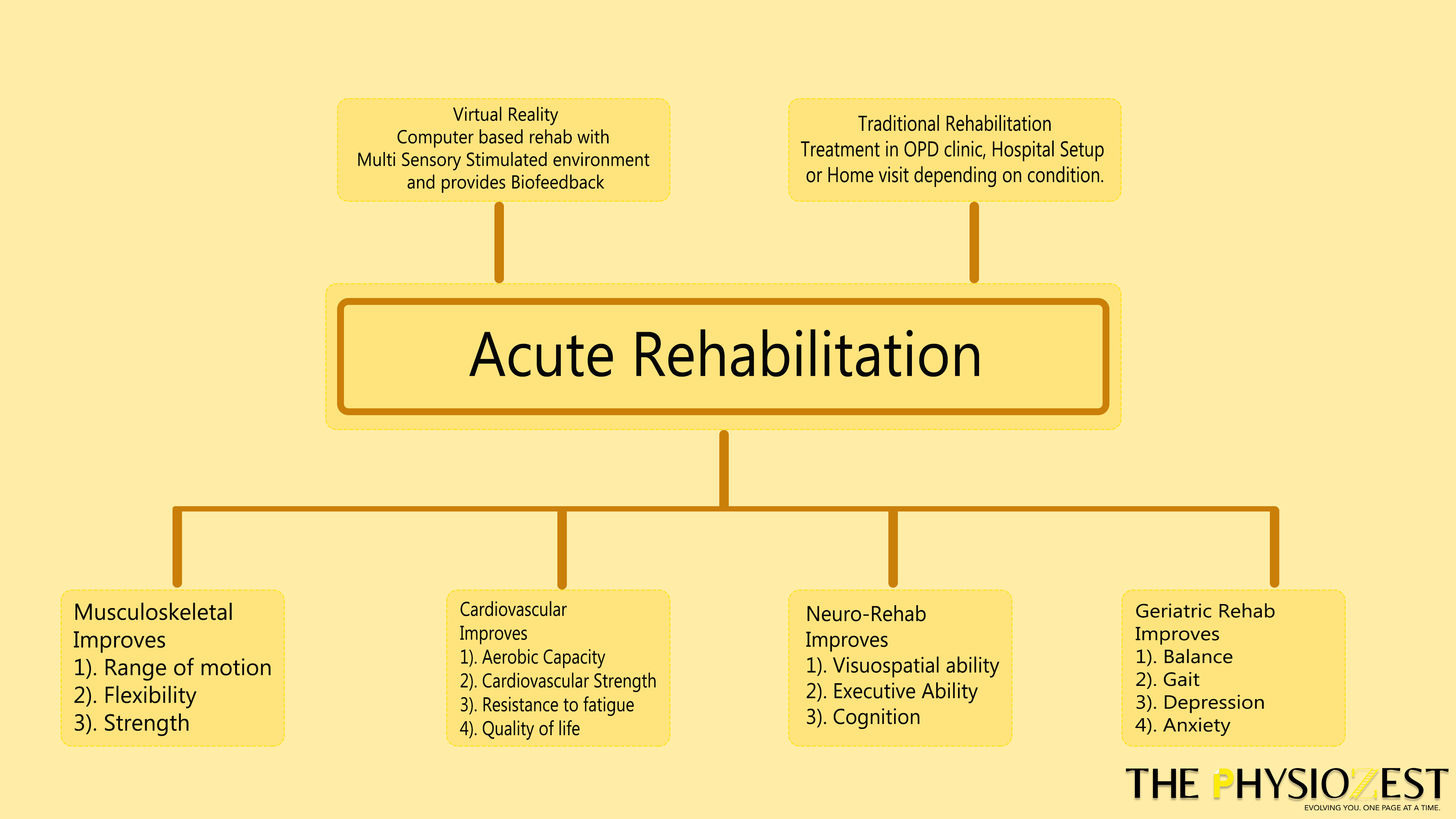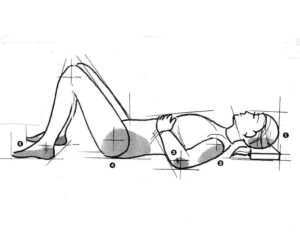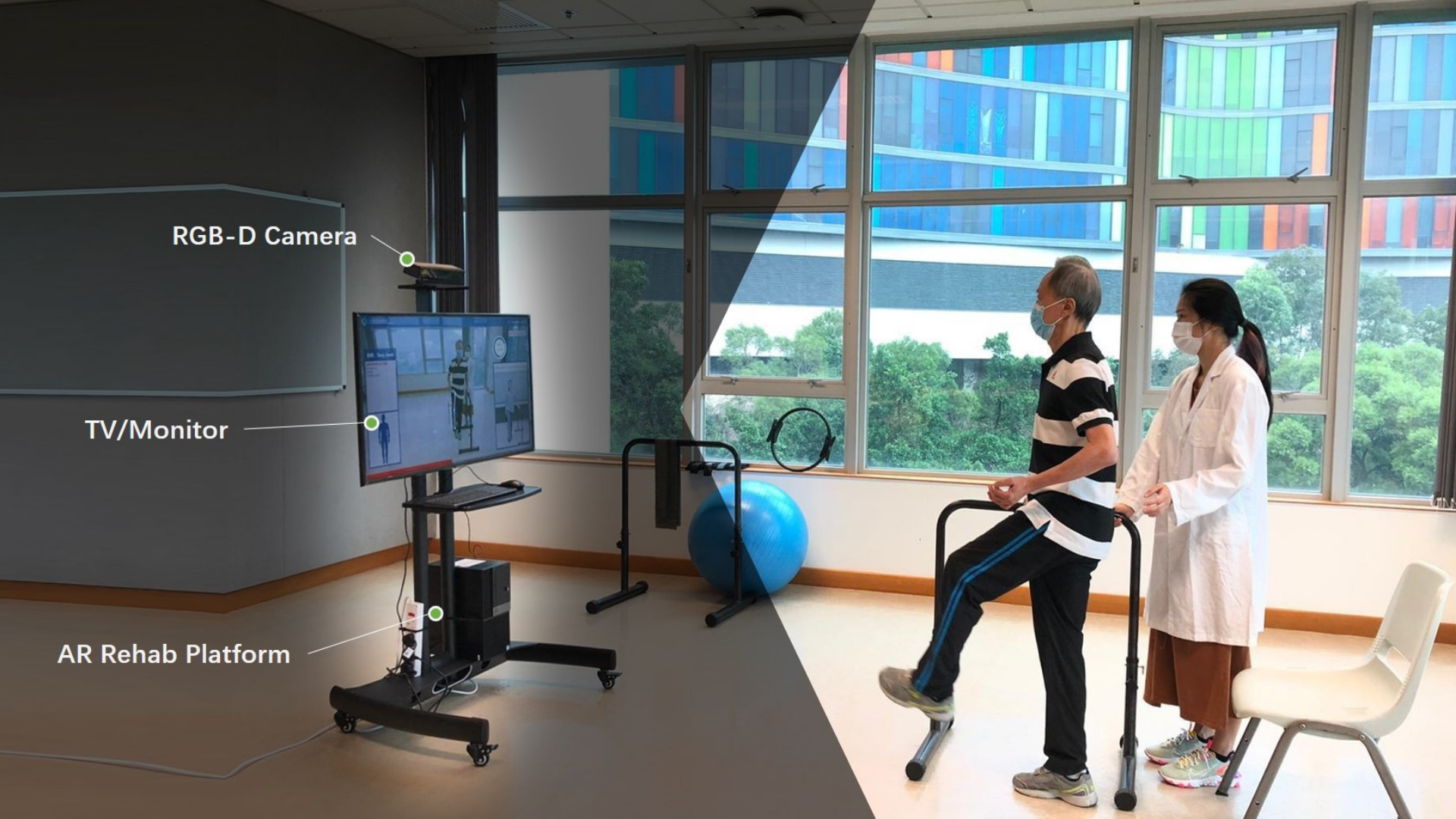
5 min read | Rehab Technology
GAMIFIED REHAB: To be or not to be?
Written by Rucha Gadgil, Natasja Azad, Anamika Bheda
Graphics by Param Sampat
Share this article
Imagine this, you are binging on YouTube (well in the time of Netflix & Amazon- not many do that) and a Big Tech Founder talks about technology changing the world (you know who we are hinting at). Listening to him, you’re excited, a little curious and intimidated. Intimidated by the idea of change. As a physical therapist, hands and empathy translate into your work (the brain is definitely a part of the process).
So will a world run by technology, drive hands-on old-school PTs out of the game?
Not unless we use technology to amp up our treatment. It will equip us with a tool that could enhance patient training, break the tedious, boring patterns, and most importantly help us thrive in a metaverse.
Enter Virtual Reality
VR can be considered as extra garnishing that makes our rehabilitation dishes interesting. It’s mainly because it’s something new and shiny for the patients (though it’s not for the clinicians).
Although it has been around for a long time, the progress and the actual application show a sluggish pace. However, the pandemic did allow VR to come under the spotlight.
According to a recent study published by Facts & Factors, VR is expected to become one of the fastest-growing fields in the next five years at the rate of 34.96%
The reasons are:
- Inaccessibility of in-person healthcare
- Innovative methods attractive to all populations
- Need to break the mould of repetitive protocols
The rise of the metaverse does create a perception of bleakness in the real world which can increase interest in the virtual world. But one of the most challenging aspects we face is the cost.
Can this therapy be sustained in a developing country like India? Or will it be another fad?
VR in Physiotherapy
I am sure at some point of time you might have played Mario Kart– an addictive game suitable for any age.

Imagine going to your PT session and playing similar games- wouldn’t you be excited?! That is the crux of gamified rehab, using virtual games to exercise.Virtual reality, in simple words, is a make-believe world/situation that the user experiences.
Your Clinical Tip:
Simulated versions of real-life situations which can be used as treatment protocols without going through any form of repercussions.
Through this article we want to throw light on how video games can be put to use therapeutically.
What Can VR Treat?
Scientific evidence is limited to neurological conditions and musculoskeletal conditions. However, there has been a steady rise in using it to treat cardiorespiratory conditions and it has shown results in the elderly as well.
Let’s talk a bit more about what VR is and what conditions it can treat.
VR is mainly of three types:
- Immersive VR – Hello Metaverse
- Non-Immersive VR- Nintendo wii, PS 5 and The likes
- Mixed VR- a mixture of the two
Some of the most popular VR devices and games are –
1. Playstation – Astro Bot Rescue Mission
2. HTC Vive – Beat Saber
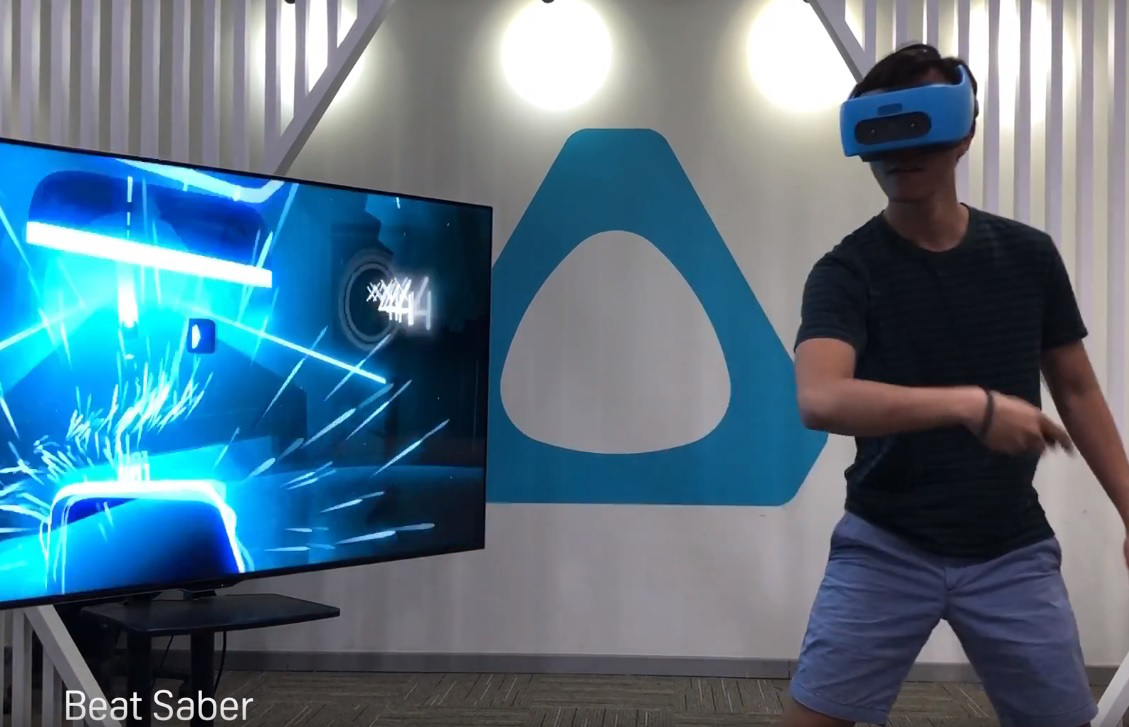
3. Oculus Quest – Lone Echo

4. Oculus Rift – Minecraft
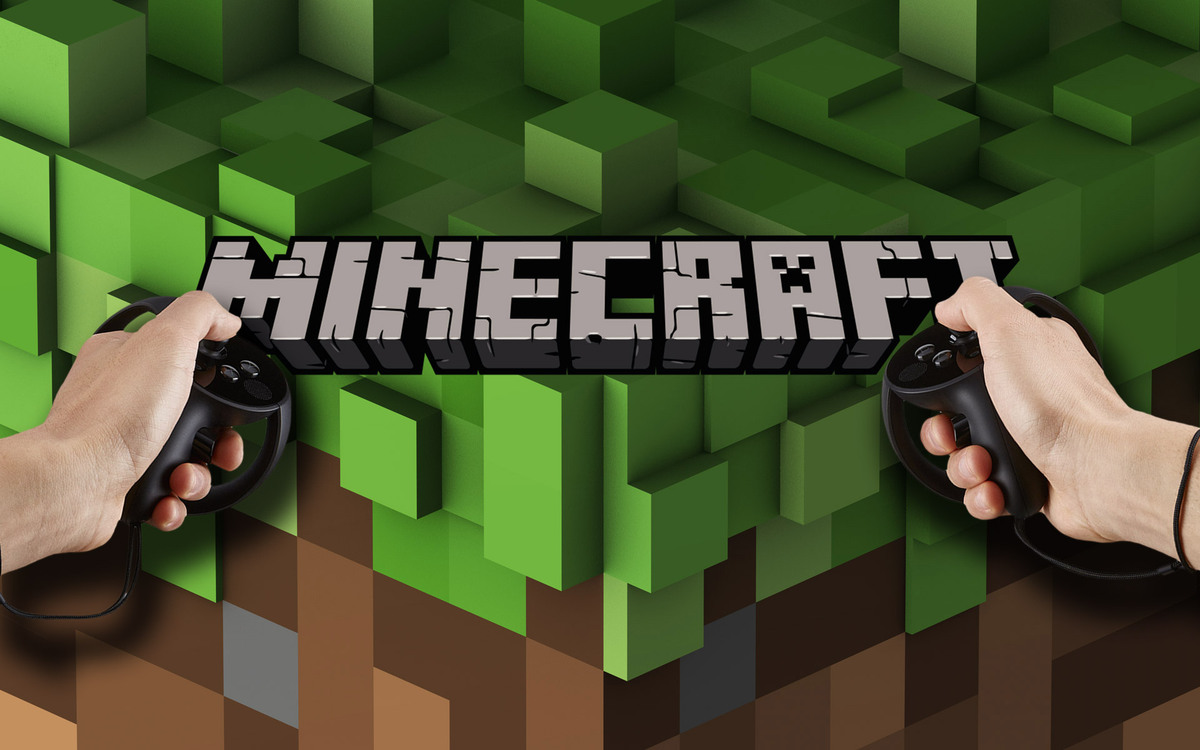
5. Wii Fit
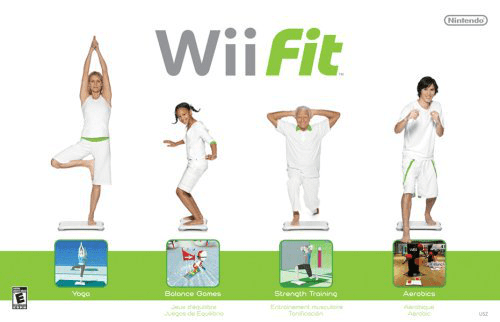
VR vs Traditional Exercise
There are several other positives of VR which overrule the benefits of Traditional Rehab exercises: There are several other positives of VR which overrule the benefits of Traditional Rehab exercises:
- Engaging & Entertaining
- Variability in the execution of exercises.
- Multiple systems can be targeted on a larger scale
- Improves the compliance and adherence of the patients
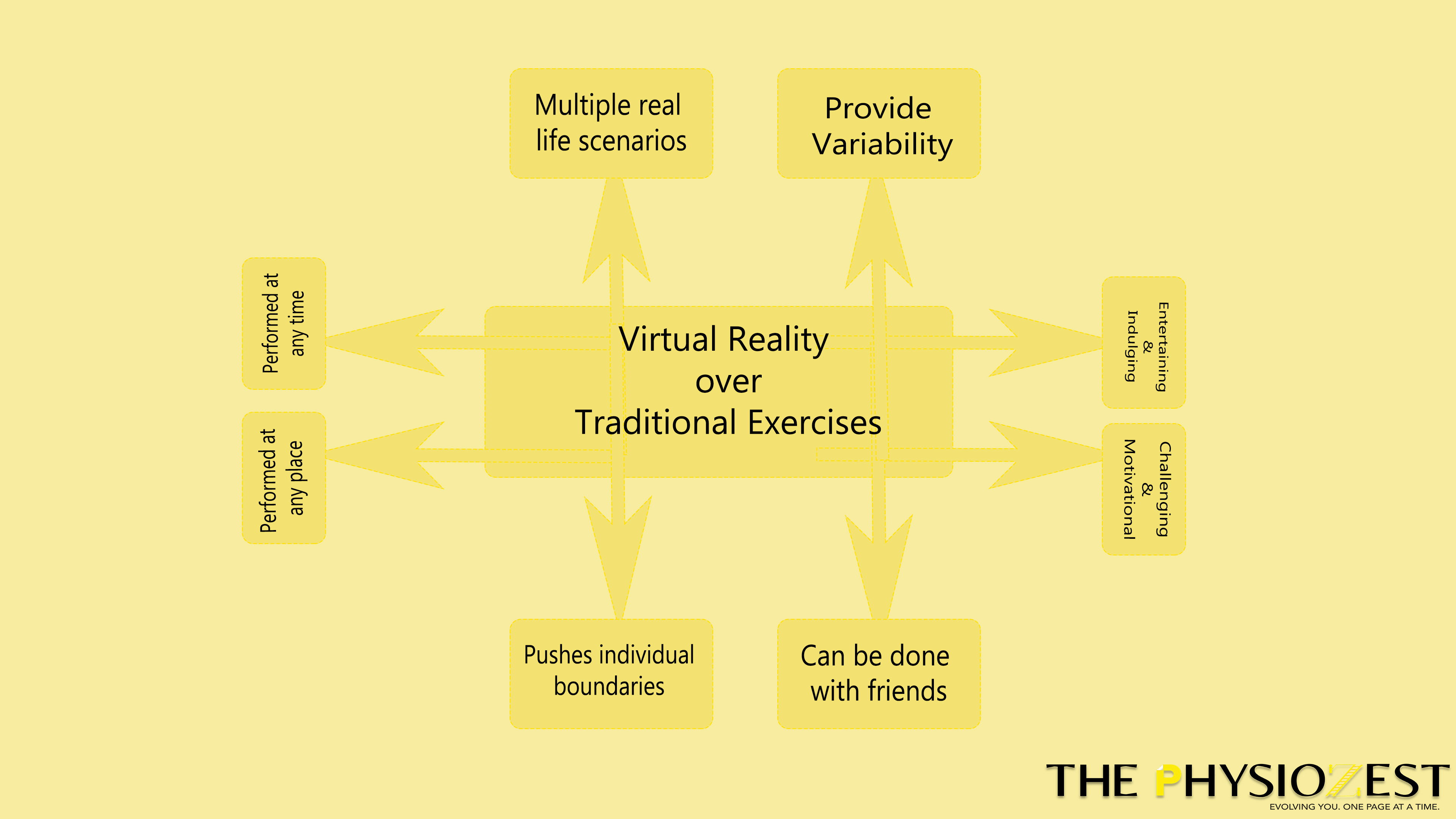
Then why is VR not the norm?
Simply put, it’s way too costly. The cost can explain its stagnancy for execution in a developing country like India but what about in developed countries? Why did the rehab world need a pandemic to accept VR?
What VR doesn’t have yet:
- Touch
- Empathy
These 2 human cornerstones are not yet replaceable and hence letting VR govern Rehab completely isn’t yet such a good idea!
The lockdown and rise of metaverse forced physiotherapists to change their treatment methods and helped us provide our services along with showing empathy virtually explains the enormous rise in its usage.
Also Read: My Fibromyalgia Pain Story
Question time:
Do you think that a country like India will adapt to VR, will small clinics, setups in rural areas and polyclinics with bare minimum funds be able to adapt to VR as one of their services to reach their target patients?
The consensus seems to be “no”.
Some Roadblocks on poor adaptability of VR (we have included perceptional opinions based on Internal survey)
- The same results can be obtained by traditional treatment methods (we wouldn’t mind if it takes more time & effort compared to more money)
- The investment is bothersome during the time of current inflation.
- All patients might demand VR- even when it is not required
- We still need more research to reinforce its need
- It helps Neuro patients
On the other side of the spectrum, the western world has used this pandemic to introduce new technology in their treatment methods:
- Advancements in the brain-machine interfaces that will send motor signals to the brain to perform an action (Stroke patients-rejoice!)
- Exoskeletons enable patients to become functionally independent.
- Immersive games- multiplayer for back exercises, post-op- rehabilitation.
These are part of an extensive list.
We agree that India might have a long way to go before we completely adopt VR. Start-ups have made affordable tech like FIZIO or armable to introduce the virtual world to our rehabilitation but so far- very few takers.
The narrow mindset that VR is just technology and we can get the same results by hands on exercise programs is halting our progress in the rehab world. Views like VR is only a new-fangled headset is wrong.
The western world is running miles ahead with technological advances while we are just breaking through the tried and tested formulas. When I asked a colleague of mine what she thought of VR- “it is in the future but the future is NOW which we often tend to forget”.
The metaverse in accordance with the virtual world is here to stay and if we don’t adapt, we might just perish.
